Simple Garden Ideas That Make a Big Impression
If your backyard feels more like a blank slate than a green retreat, you’re not alone. But starting a garden doesn’t mean mastering every Latin plant name or building raised beds from scratch. In fact, the most striking gardens often begin with just a few smart choices—and a clear idea of how you want the space to feel.
Start with Intention, Don’t Look for Perfection
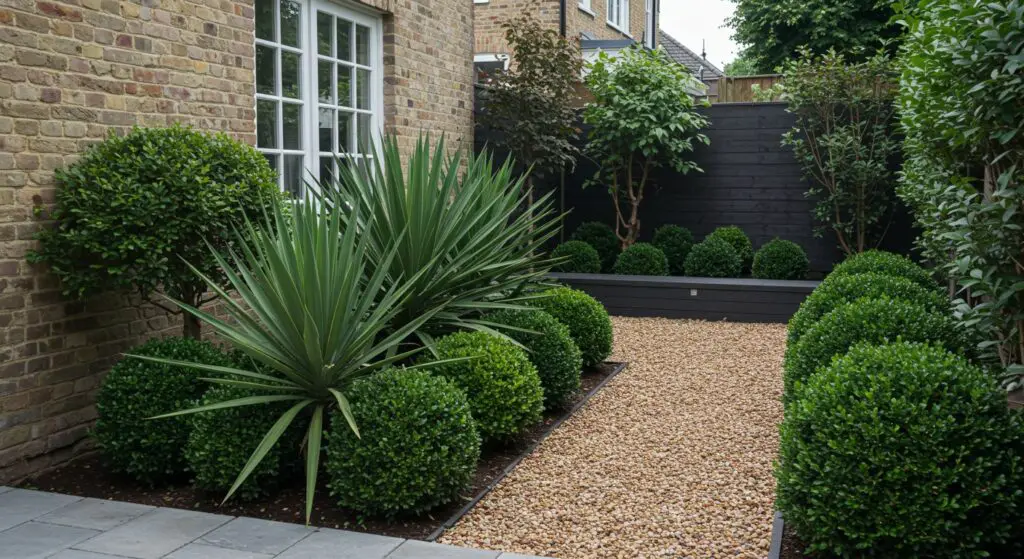
You don’t need experience to create something beautiful. With just a handful of thoughtful elements—color, texture, shape, and story—anyone can build a simple outdoor space that feels inviting. Whether you’re working with a patio, a patch of lawn, or an awkward corner, these garden ideas are practical and easy to start. And your garden can grow with you, evolving as your confidence builds.
The Essentials of Simplicity
Start with a Clear Purpose
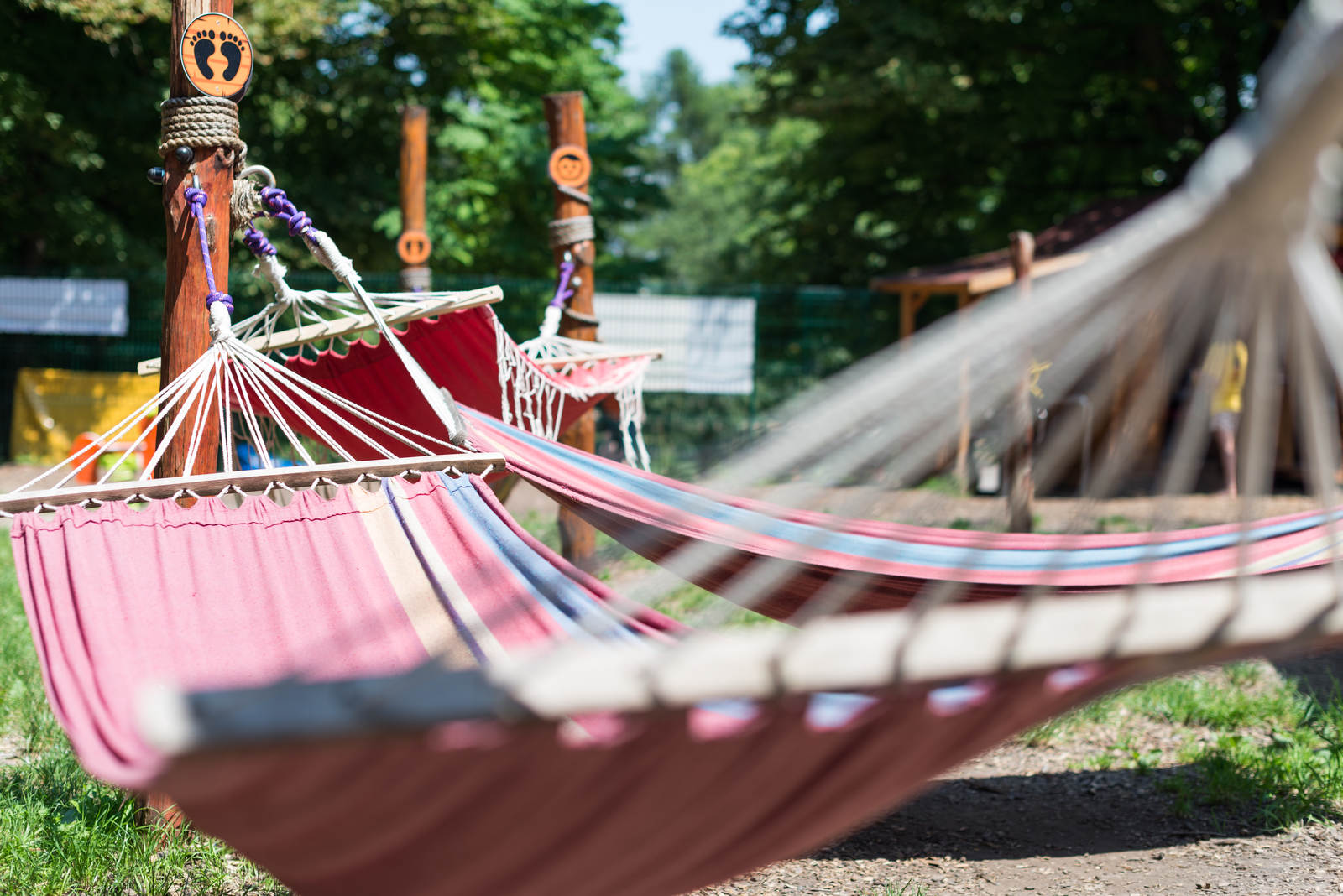
Gardens work best when they have a clear purpose. Do you want a space for relaxation or a place filled with colorful blooms? Maybe you prefer a garden that attracts wildlife or one that’s easy to maintain. Picking a clear goal helps narrow down your choices. It makes gardening decisions simpler, even if you’re new to planting and planning.
Focus on Key Elements
Keep your garden simple by limiting your choices. Choose a color scheme and stick to it. Repeating colors creates harmony and a sense of unity. And you don’t need dozens of different plants. Just select a handful of plants you like and use them in several places around your garden. Repetition gives your garden a professional look, even if you’re a complete beginner.
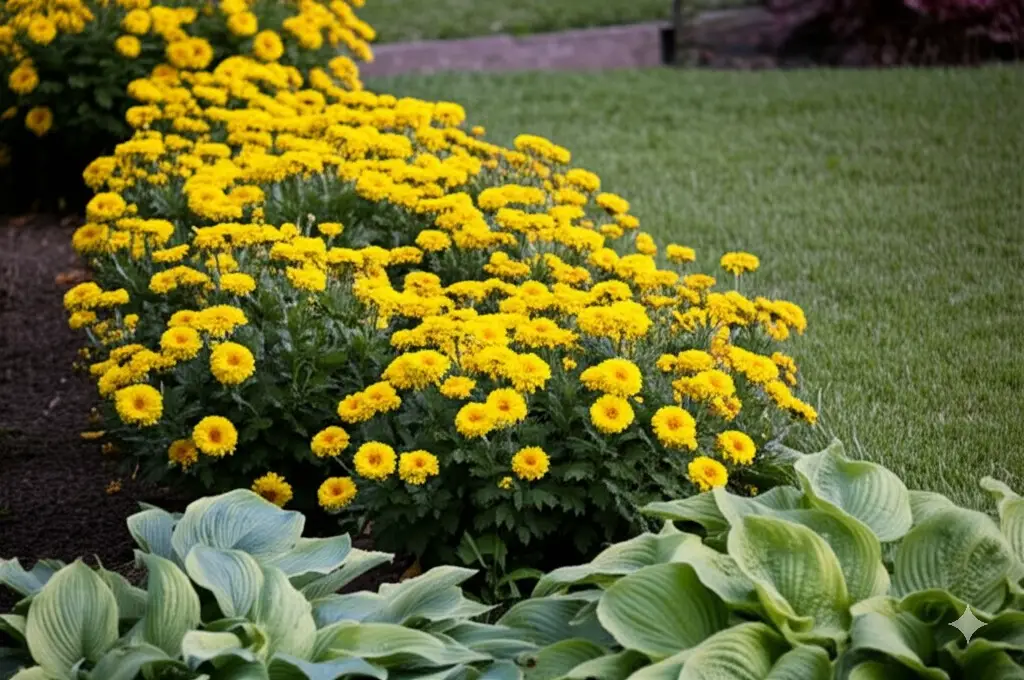
Use What You Have
You don’t have to invest in expensive landscaping. Containers, small beds, and narrow paths can make a huge difference. And even tiny spaces can be turned into beautiful gardens. Small patios or balconies are perfect spots for container gardening. Even a narrow strip beside your driveway can become a lush, green area if planted thoughtfully. Gardening is about creativity, not about having endless space.

Keeping your garden ideas straightforward doesn’t mean it won’t look impressive. When you clearly define the garden’s purpose, repeat key elements, and use your available space wisely, the results can amaze you. Simple steps lead to big impact, no matter how much gardening experience you have.
Simple Garden Ideas to Try
The garden you want to create by definition shouldn’t be be complicated. Below, I have outlined some easy-to-follow garden ideas. These concepts can help you build something really unique without needing too much, if any, gardening experience. Each one gives you clear steps to create a garden space you’ll love. Whether you want bold colors, soothing scents, or interesting stories in your garden, these practical ideas show how you can easily achieve the look you want. And the best part? You can start small, adding more elements as your garden—and your confidence—grow.
1. Color-Blocked Perennial Garden
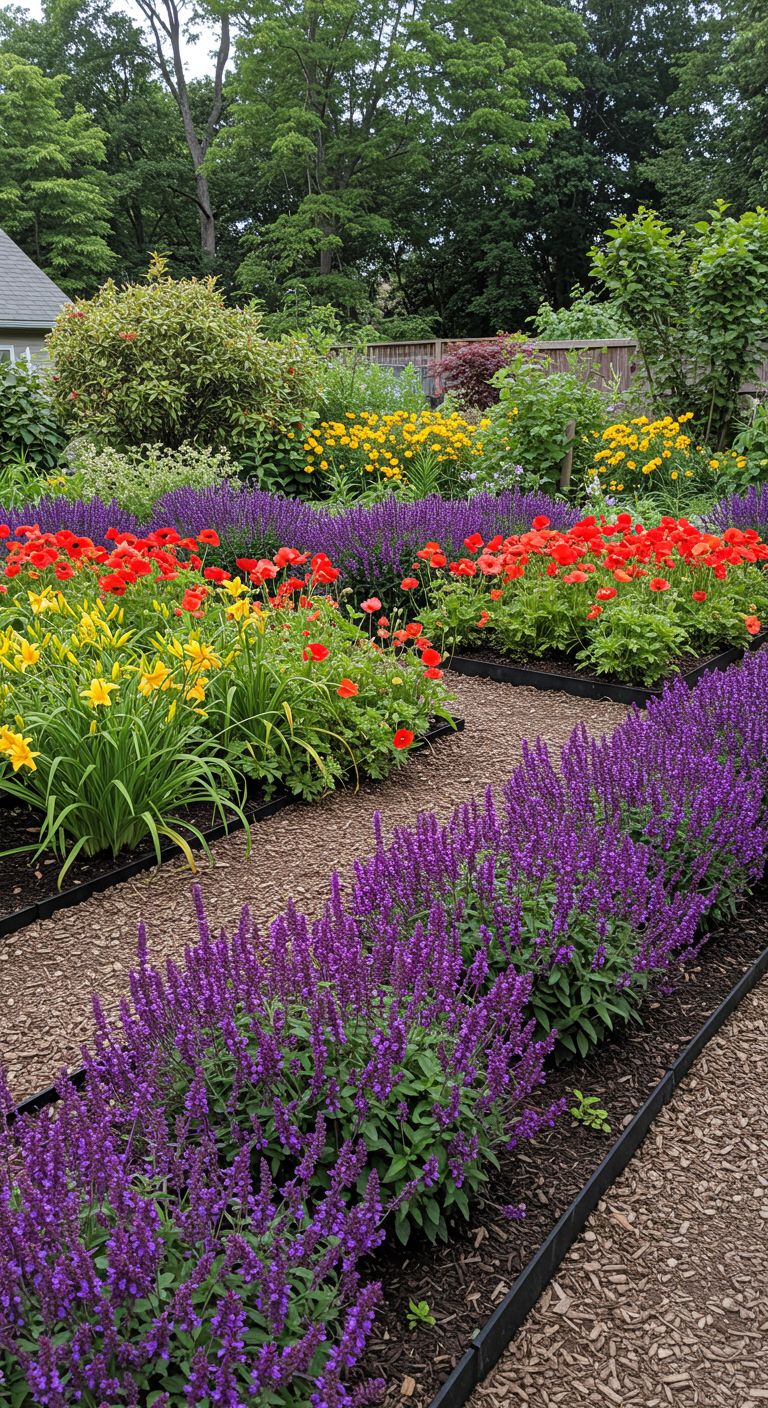
A Color-Blocked Perennial Garden makes your yard look carefully planned with minimal effort. The idea is simple: group similar-colored flowers into large blocks or sections. Bright flowers like red geraniums, purple salvias, or yellow coneflowers work perfectly.
Plant each color together in groups of three to five plants for the strongest effect. Clear edges between each block help colors stand out, so add stone edging or wood mulch around each area.
Choose plants with similar bloom times to ensure your colors pop all at once. Good combinations include purple and yellow, or red and white. Avoid mixing different colors in the same space; clear separation makes your garden look organized even if you’re just starting out.
The ideal places for a color-blocked garden are near walkways, along driveways, or in front yard flowerbeds where everyone can see the bright patterns.
2. Seasonal Sensory Retreat
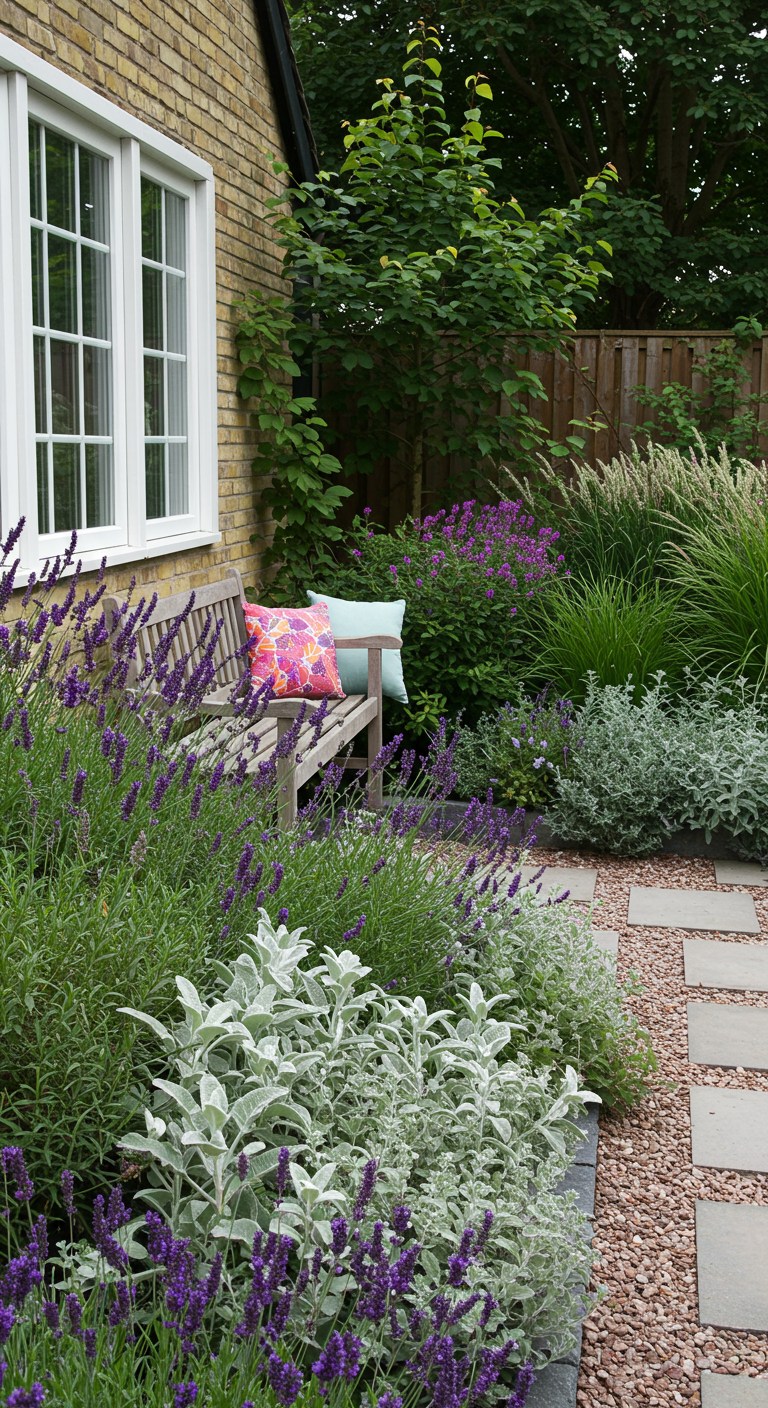
A Seasonal Sensory Retreat garden is all about engaging your senses. It’s meant to be a quiet place where you can sit, relax, and enjoy different plants throughout the year.
Start by choosing plants with appealing textures, like the fuzzy leaves of lamb’s ear or the soft foliage of silver mound artemisia. These plants are easy to grow and feel great to touch. Next, pick plants with gentle, pleasant fragrances. Lavender, mint, thyme, and rosemary smell wonderful when you brush against them.
Include ornamental grasses such as feather reed grass or blue fescue that add soft rustling sounds when breezes blow. Arrange these sensory plants around a small seating area, like a wooden bench or comfortable chair, inviting you to pause and enjoy the garden fully.
As seasons change, plants bloom or change color, giving your retreat something new and interesting every month.
3. Architectural Planting Garden
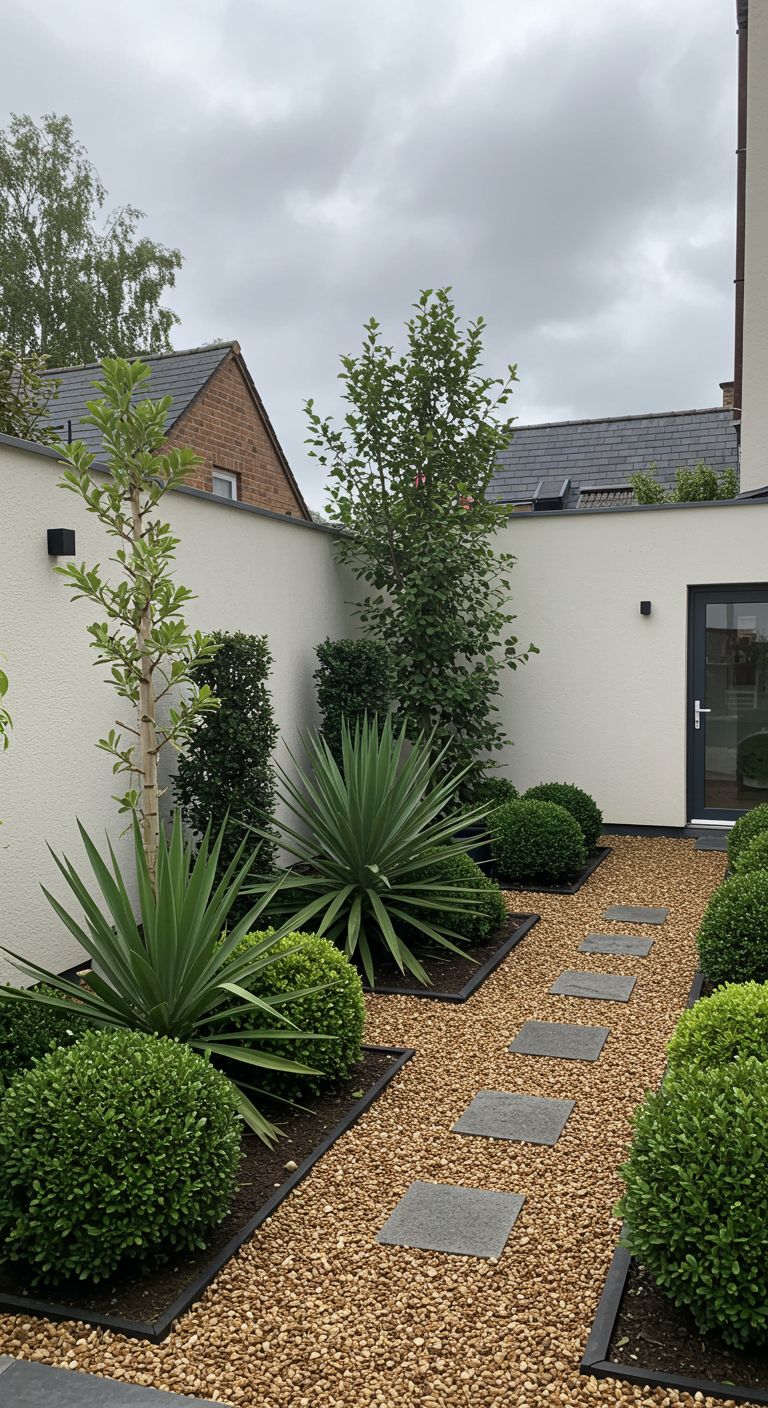
The goal of an Architectural Planting Garden is creating visual drama. Instead of relying heavily on flowers, use plants that have strong, bold shapes. Yucca plants, with their pointed leaves, boxwoods clipped into neat shapes, and tall ornamental grasses are excellent choices.
Arrange these plants in clusters or lines to highlight their shapes clearly. To enhance the look, surround the plants with simple materials like gravel or bark mulch. These neutral backgrounds make your plants stand out even more.
Because you use fewer plants, the garden is easier to maintain. Architectural gardens look especially good in modern homes or urban settings where clean lines are important.
The simplicity of this style is perfect for beginner gardeners who want a garden that feels elegant but doesn’t require a lot of upkeep.
Picture this: A modern, clean-looking garden with striking yucca plants placed near neatly trimmed boxwoods, all surrounded by gravel paths, creating a bold yet easy-to-care-for outdoor space.
4. Container Mosaic Display
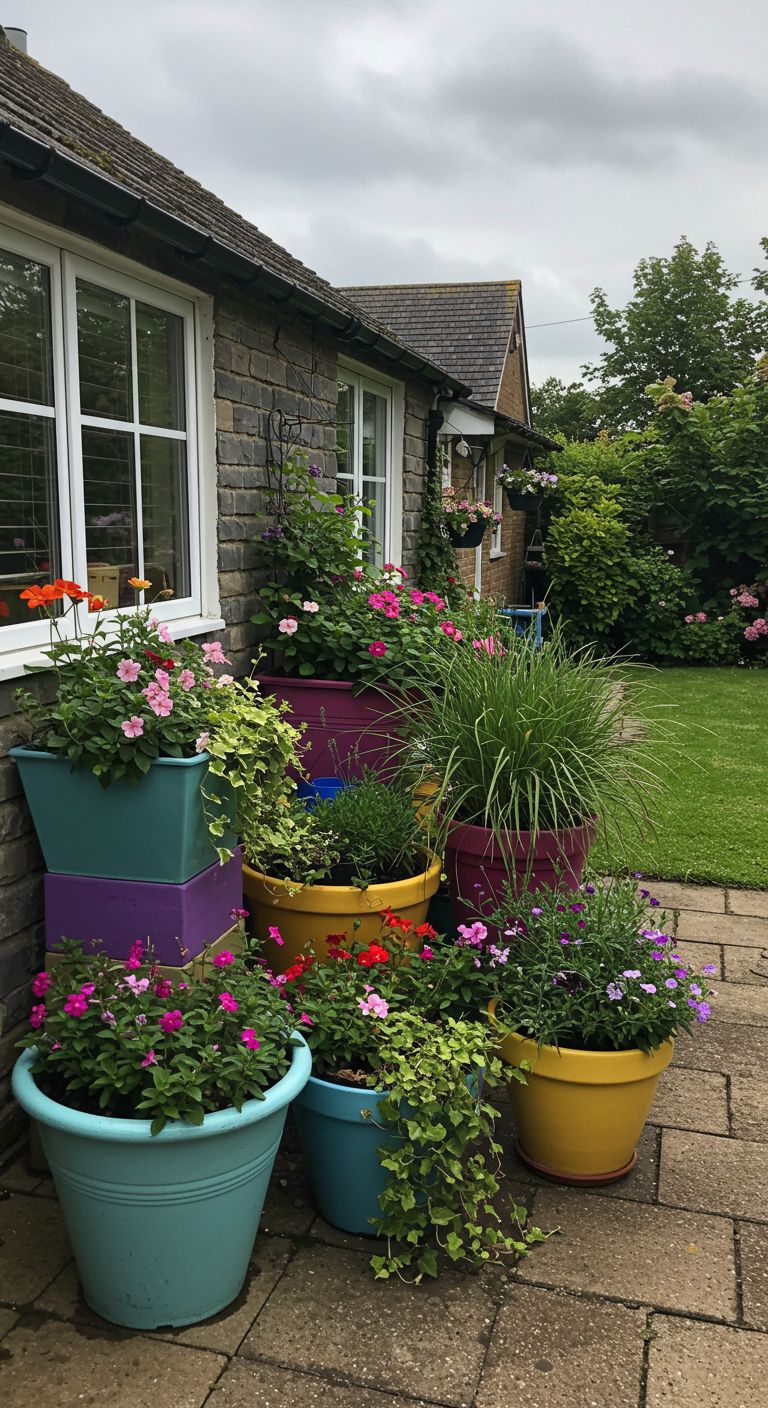
A Container Mosaic Display is ideal if you have limited space or prefer flexibility. Here, you can mix and match pots and containers of different styles and sizes. Use terracotta pots, painted containers, metal buckets, or even recycled items like old watering cans.
- Fill them with a variety of plants.
- Flowers like petunias or marigolds offer bright pops of color.
- Tall grasses or small shrubs add height and structure.
- Trailing vines like sweet potato vine or creeping jenny spill gracefully over container edges, softening the look.
It is good to group your containers in clusters of three, five, or seven. Odd-numbered groups tend to look better visually. Place taller pots at the back and smaller ones up front to create depth. The best part about container gardening is that you can move your pots around whenever you want, changing your garden’s look anytime.
5. Narrative Garden
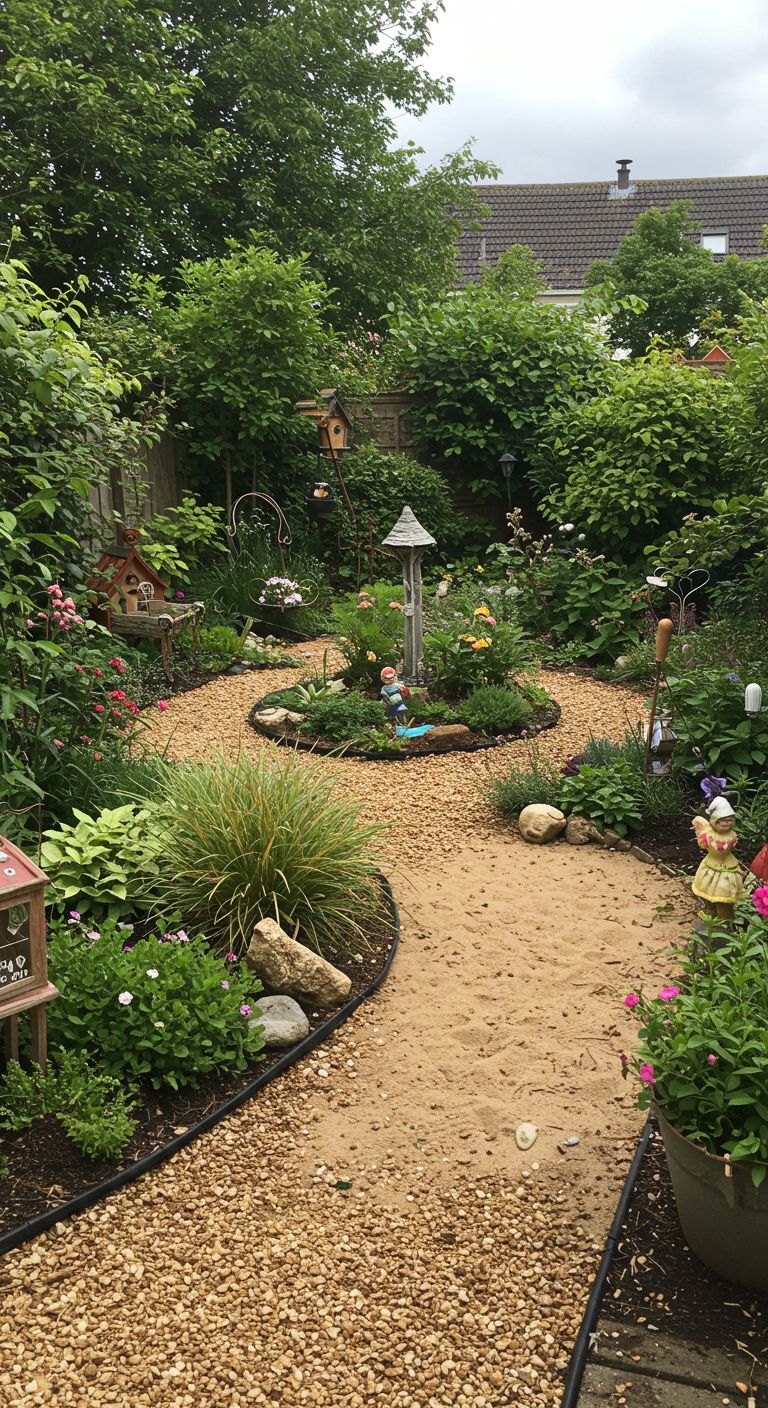
A Narrative Garden tells a personal story or celebrates something meaningful to you. It can highlight your family heritage, local history, or favorite places. Divide your garden into small sections, each representing a theme or chapter of your story.
If your family loves the beach, create a coastal garden using beach grasses, shells, driftwood, and sand-colored stones. For a woodland theme, plant shade-loving ferns, hostas, and wildflowers among tree stumps or logs.
Personal touches help your garden feel authentic. If your grandparents grew roses, plant some roses in their memory. Or include reclaimed materials from your family home, like old bricks or wooden beams.
Connecting your garden to stories you love makes it meaningful. Visitors will enjoy exploring the space, discovering each area’s unique story.
6. Nighttime Illumination Garden
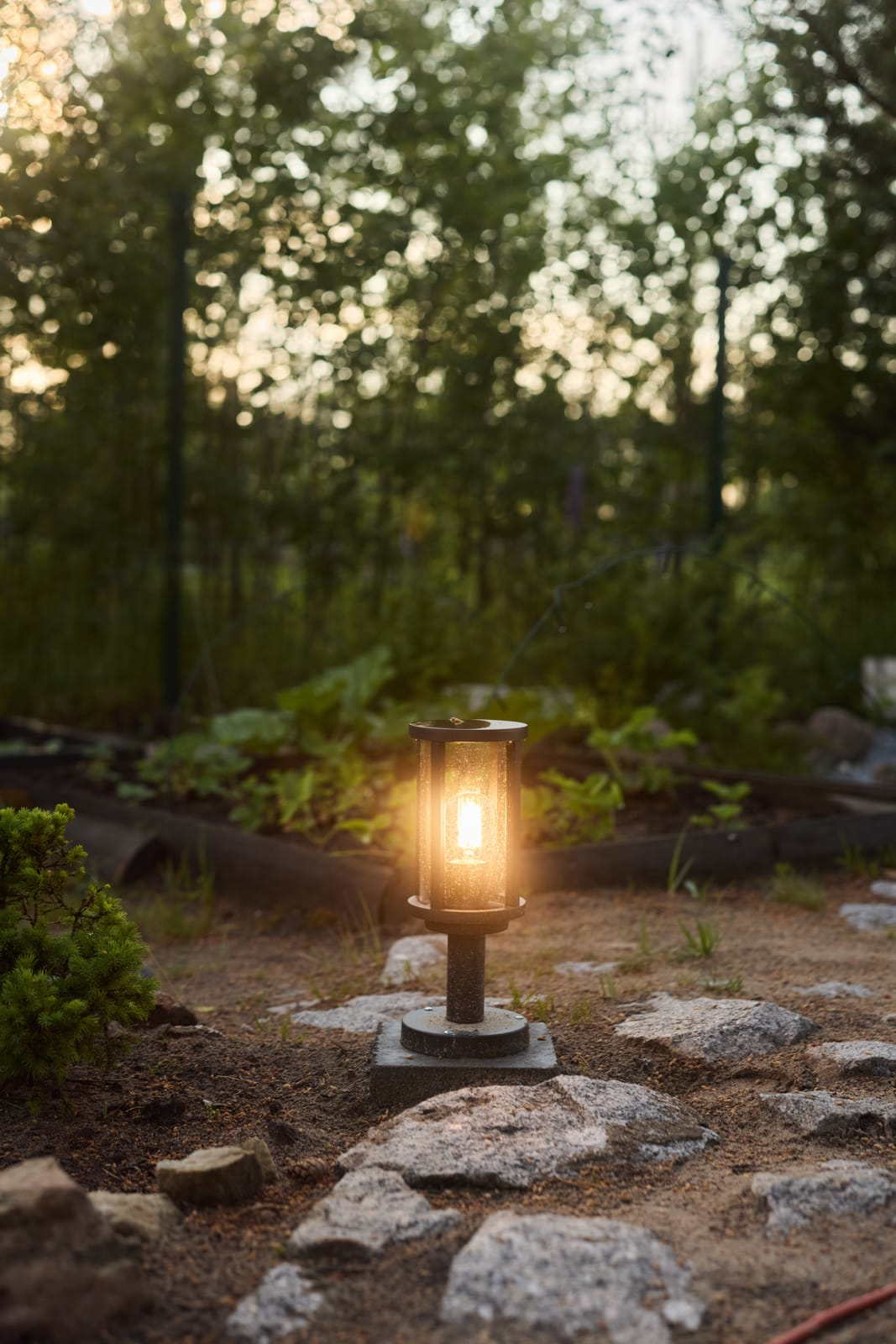
A Nighttime Illumination Garden is perfect if you enjoy spending evenings outdoors. The main idea is to choose plants and lighting that glow gently at night, creating a peaceful, magical effect. Plants with white or pale-colored flowers, like white echinacea, moonflower, or white impatiens, shine beautifully after dark. Also, plants with silvery leaves, such as dusty miller or artemisia, reflect moonlight naturally.
- For lighting, use simple solar lights or string lights hidden among plants.
- Keep lighting subtle—just enough to highlight your plants without overpowering them.
- Arrange your lights along paths or near seating areas.
It’s simple, yet the garden feels completely different at night. You’ll find yourself wanting to linger outside, enjoying the quiet glow of your nighttime garden.
7. Textural Contrast Garden
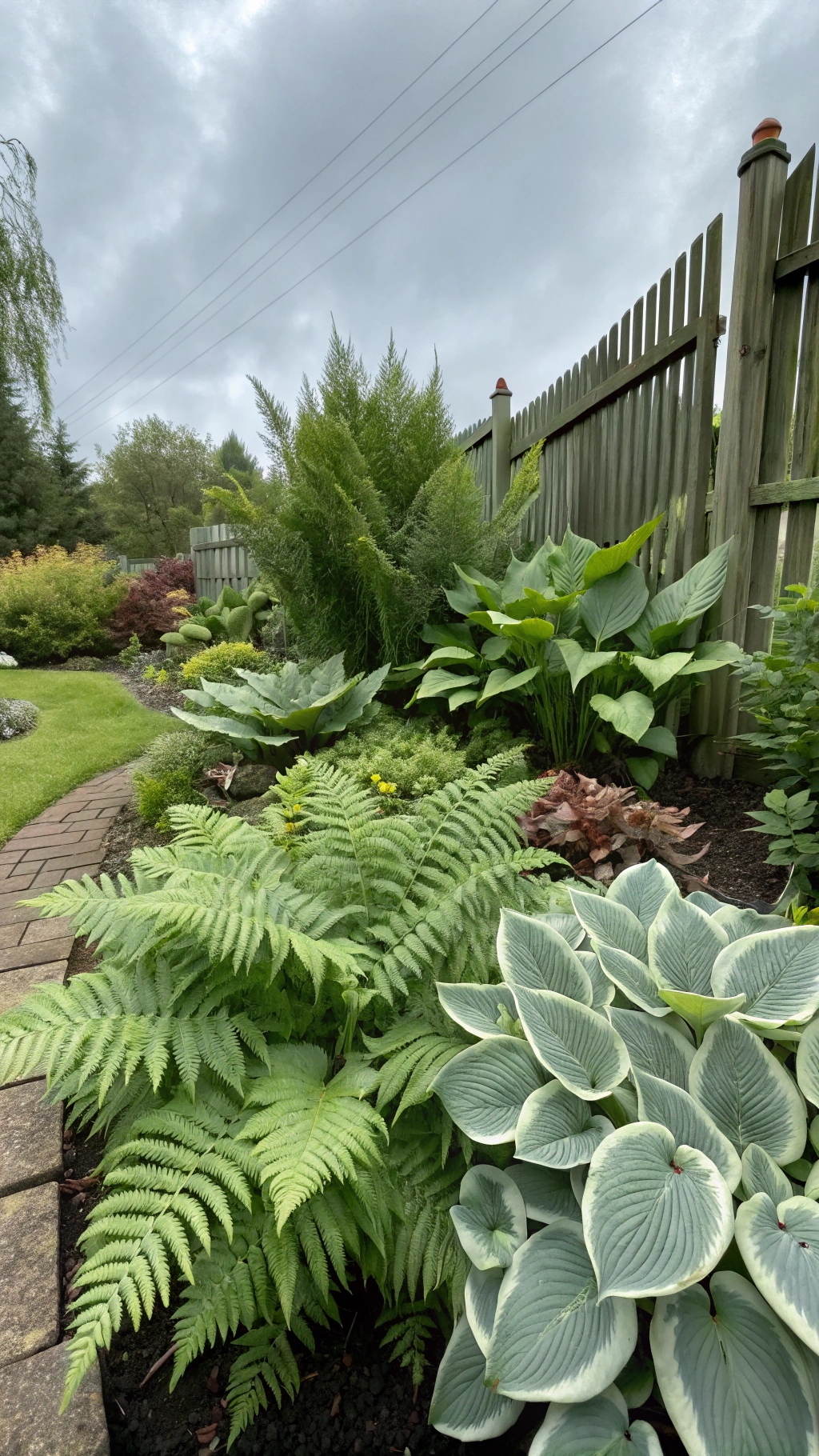
In a Textural Contrast Garden, the look and feel of the plants matter most. Mix plants with different textures to create visual excitement. Combine plants with soft, delicate leaves, like ferns or bleeding hearts, next to plants with tougher, rough leaves like hostas or agaves.
This contrast makes your garden interesting, even without many colorful blooms. Plant soft, feathery ornamental grasses beside large-leaved hostas. Or place small, fine-textured creeping thyme near bolder succulents.
Textural gardens are ideal for shaded spots or corners where flowers might not grow easily. And because you’re mainly mixing greens and foliage, it stays attractive all year long. It’s easy gardening with big impact—great for beginners.
8. Hidden Edible Accents Garden

A Hidden Edible Accents Garden is fun and practical. You integrate small edible plants into your ornamental garden areas. Edibles like strawberries, herbs, lettuce, and chives can grow alongside your flowers without standing out too much.
For example, plant colorful chard among your flowering annuals or let creeping thyme edge your pathways. Herbs like basil or oregano blend in beautifully with many decorative plants. Strawberry plants tucked among perennials provide small surprises during summer.
The result is a beautiful garden that also provides fresh food. It’s easy, practical, and a great way to try gardening if you’re new. Plus, you’ll enjoy picking fresh herbs or berries as you walk through your garden.
9. Urban Reclaimed Garden
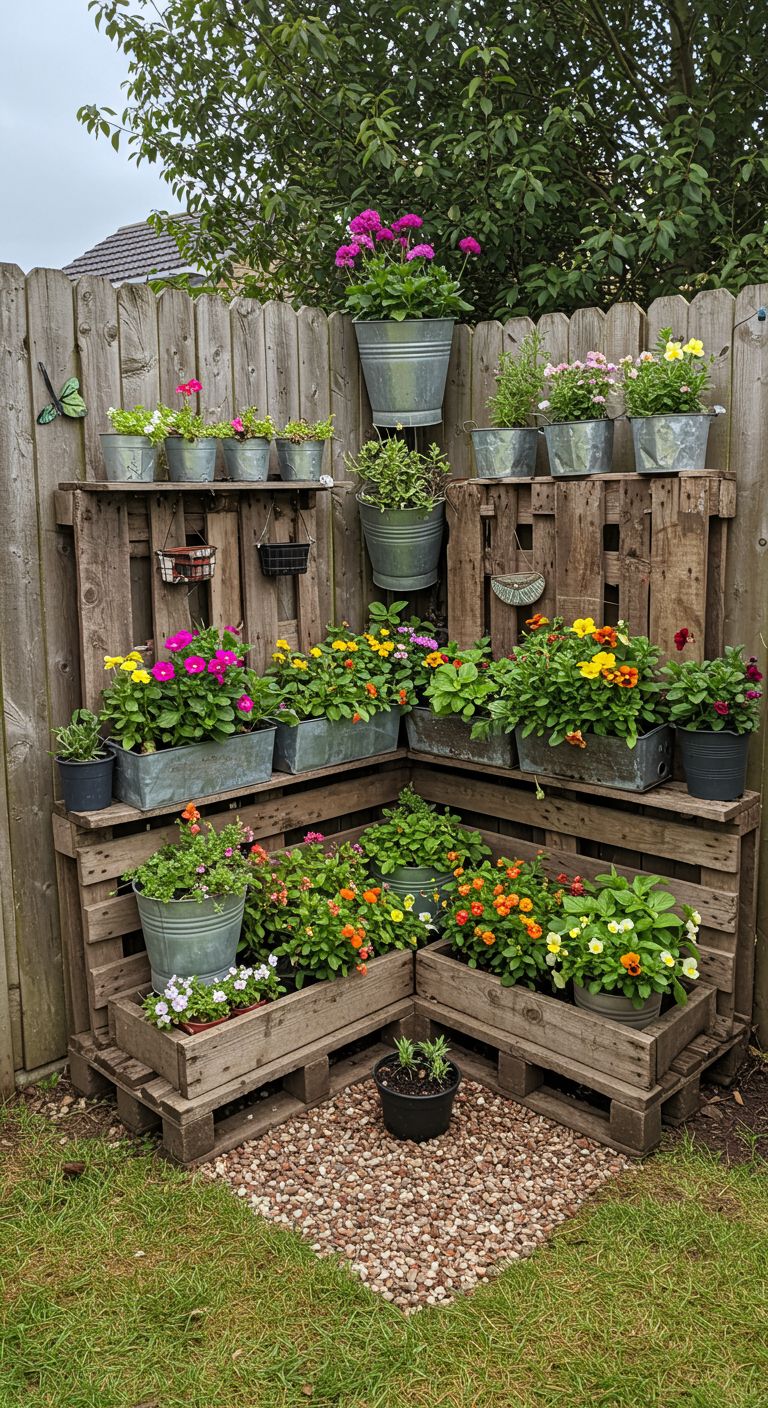
Building an Urban Reclaimed Garden is about combining nature with reclaimed, recycled materials. It’s perfect for urban spaces or small backyards. Items like old pallets, metal buckets, reclaimed wood, or even vintage tiles become planters and garden decorations.
- Filling recycled containers with easy-to-grow plants.
- Using pallets as vertical gardens for herbs or succulents.
- Old buckets can hold colorful annual flowers or grasses.
With these ideas the contrast between natural greenery and reclaimed objects creates a unique style.
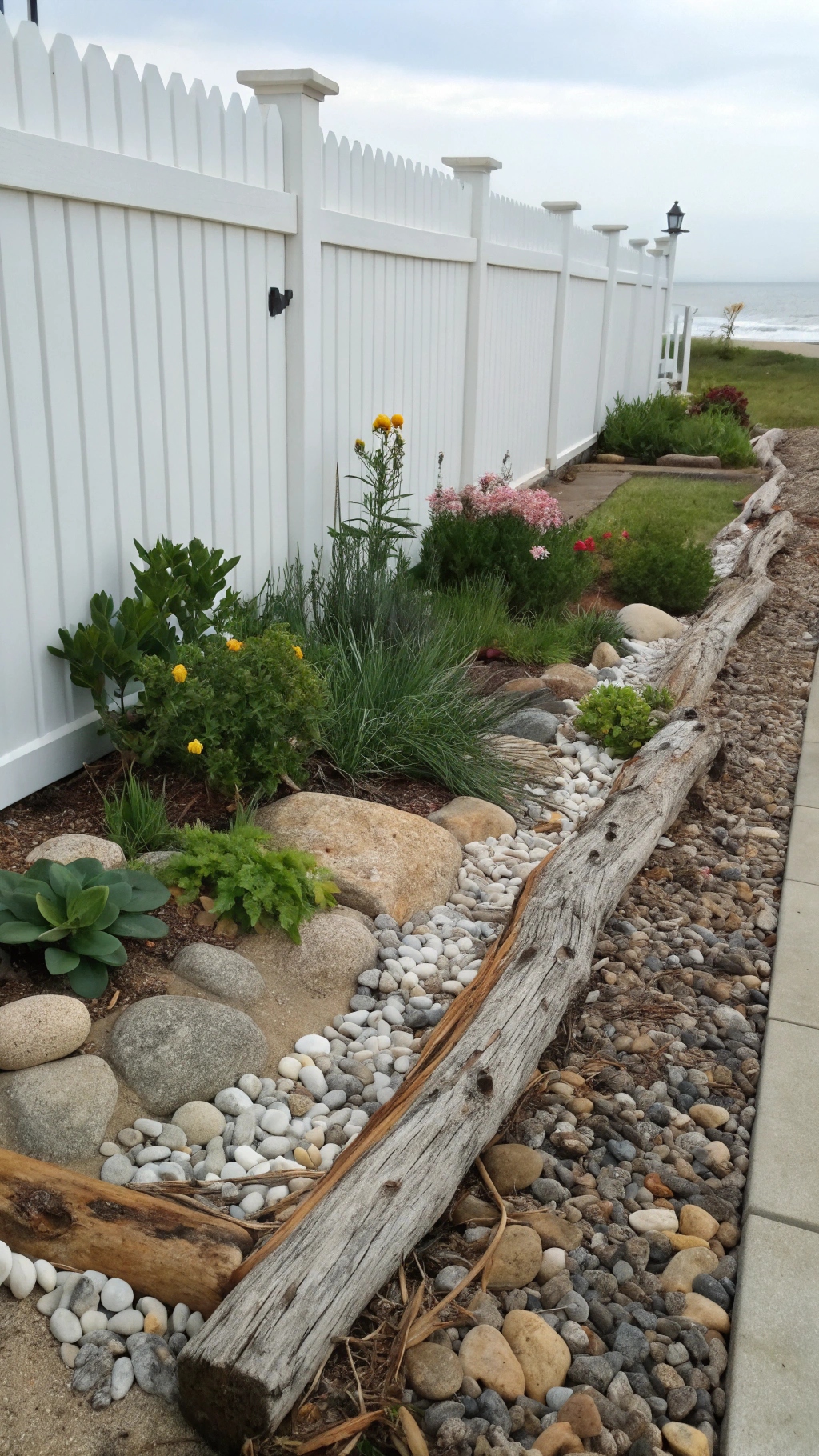
A reclaimed type garden is also budget-friendly and environmentally friendly. Beginners especially like this style because it encourages creativity and reusing what you already have. Your garden becomes a statement about sustainability, creativity, and urban charm.
10. Interactive Outdoor Nook
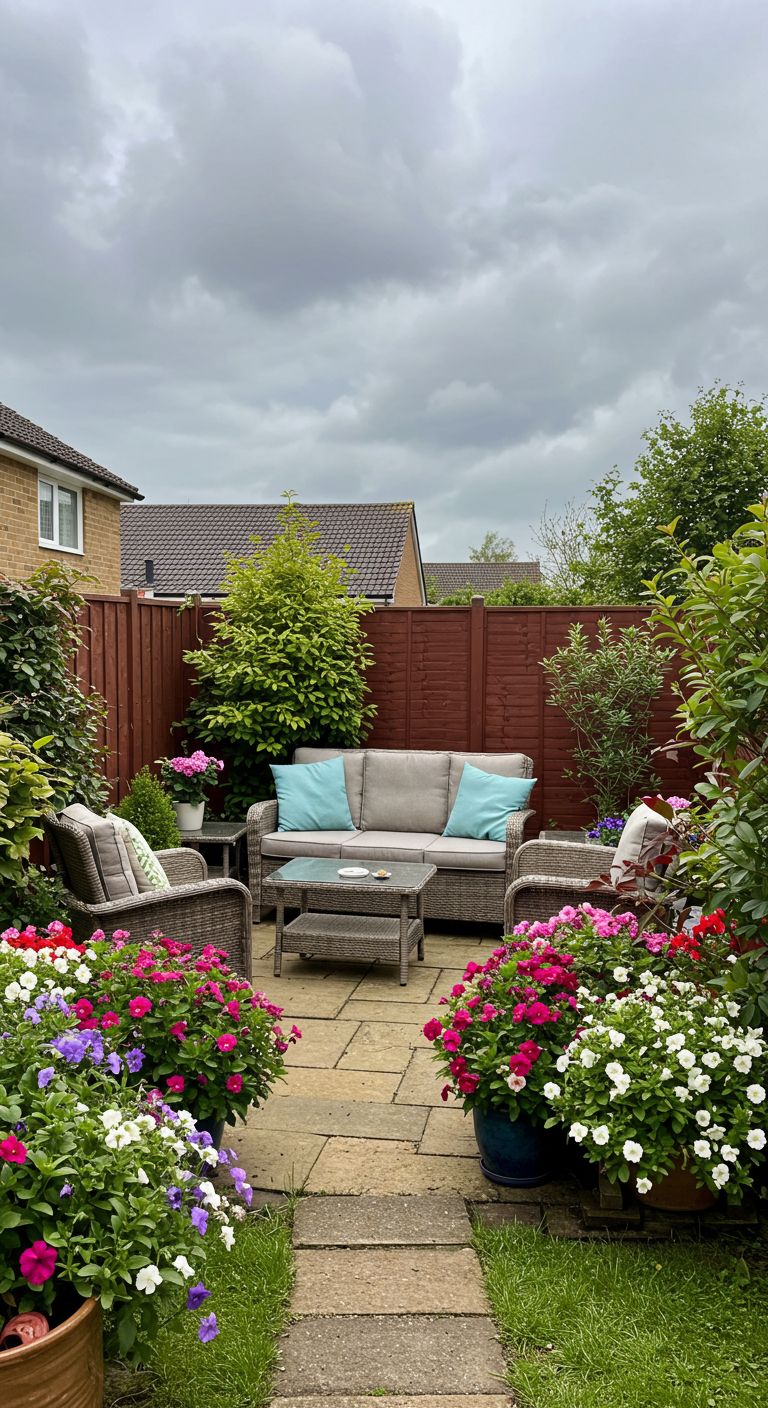
An Interactive Outdoor Nook creates a space to pause, interact, and enjoy nature. Even small yards or balconies can have an engaging nook. Include simple features like a birdbath, small fountain, wind chimes, or decorative stones.
- Add comfortable seating, like a small bench or cozy chair.
- Choose plants nearby that encourage birds and butterflies, such as coneflowers, zinnias, or milkweed.
These features invite interaction—you’ll want to sit and listen to water or watch wildlife visit.
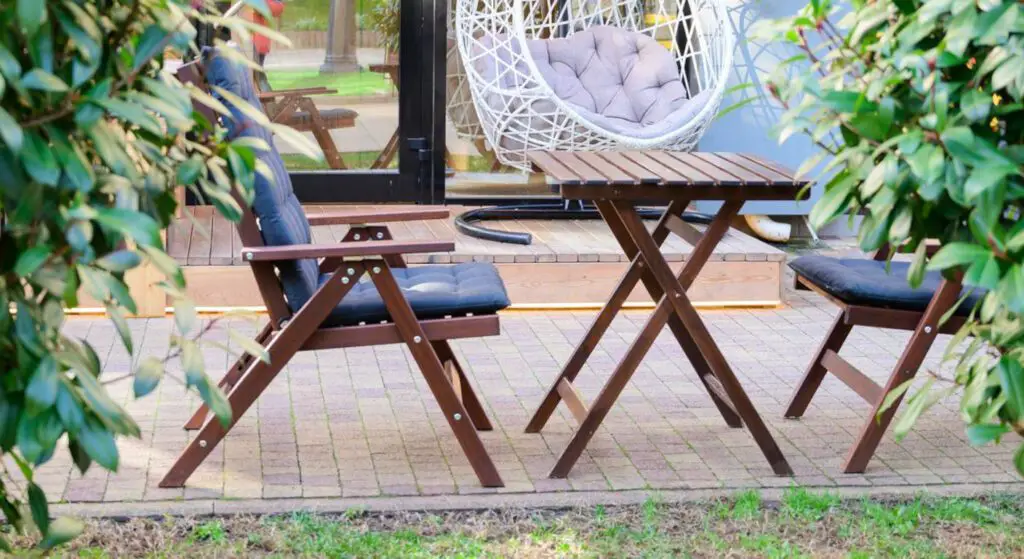
Interactive gardens don’t need a lot of space or complicated elements. Just pick a small area, place items you enjoy, and add plants that draw in nature. It’s an easy and satisfying garden project you can complete in a weekend.
Aesthetic Without Overwhelm
Creating a beautiful garden doesn’t mean it has to be complicated. Keeping things simple often leads to a better result, especially if you’re new to gardening. A clear, easy-to-maintain layout helps your garden feel organized. It also saves you time and makes upkeep less stressful. Using just a few straightforward design principles can give your space a polished, professional look—without needing any gardening experience.
Repeat Key Colors or Shapes
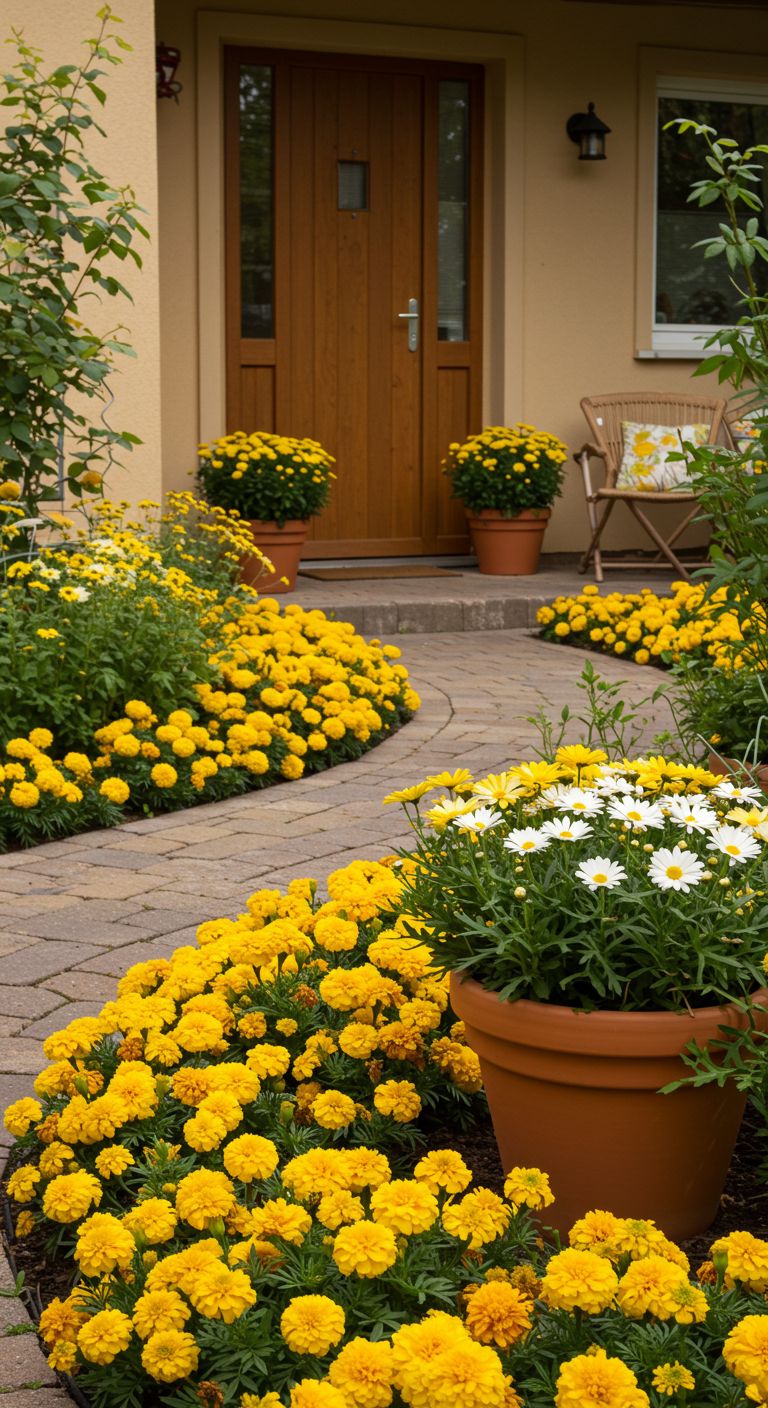
One simple trick to make your garden look cohesive is to repeat key colors or shapes throughout the area. Choose two or three colors you love and use them consistently. For example, if you pick purple, yellow, and white, repeat those colors in several spots. Purple petunias in a container, yellow daisies along a path, and white roses near a seating area create harmony. Your eyes naturally notice these repeating elements, helping the garden feel connected and balanced.
You can also repeat certain plant shapes. If you use round bushes or shrubs in one area, repeat similar rounded shapes somewhere else. Repetition creates a clear pattern, making your garden feel planned even if you’re just starting out.
Anchor the Space
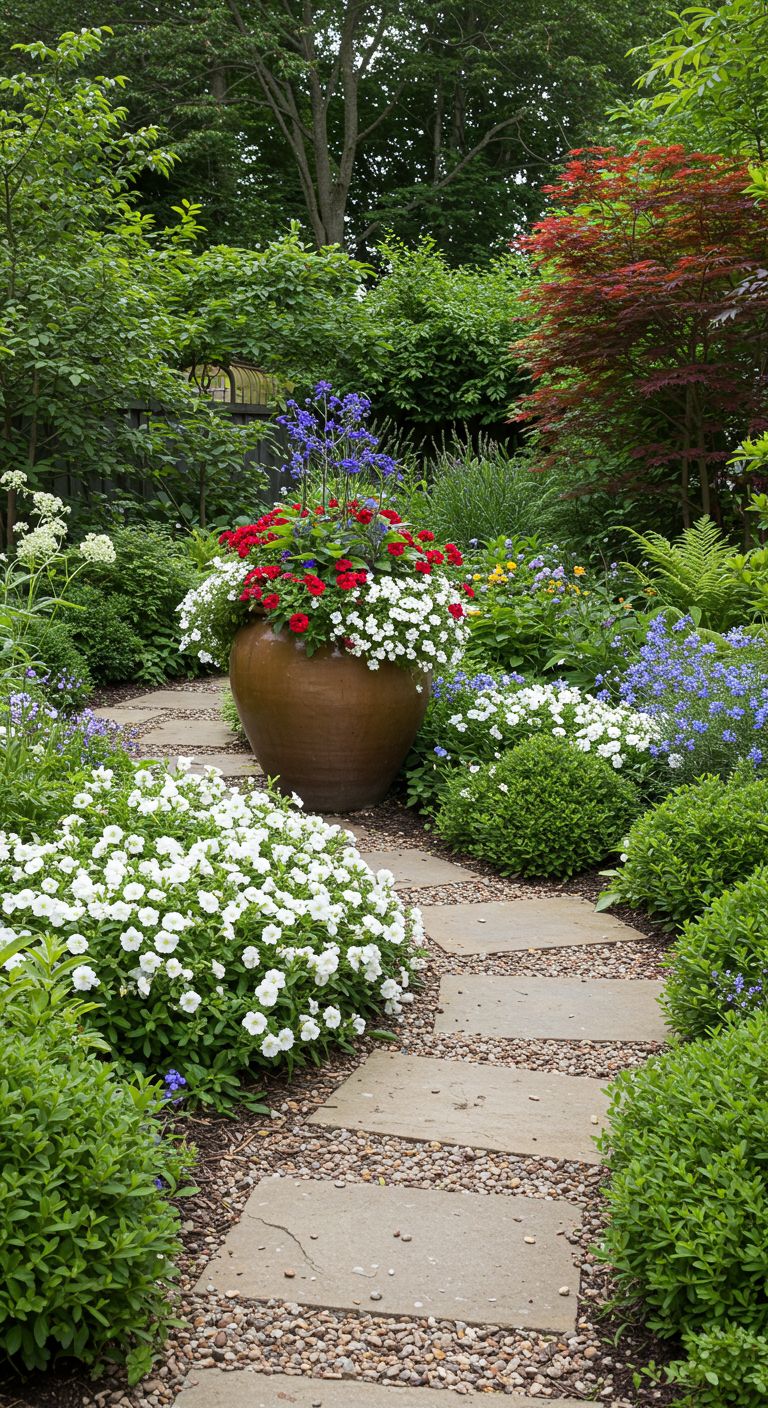
Gardens feel balanced when there’s something clear and strong anchoring the space. To anchor the space, pick one or two larger items—like big pots, a bench, or even a small tree—and place them carefully in your yard. These focal points attract attention and give your garden structure.
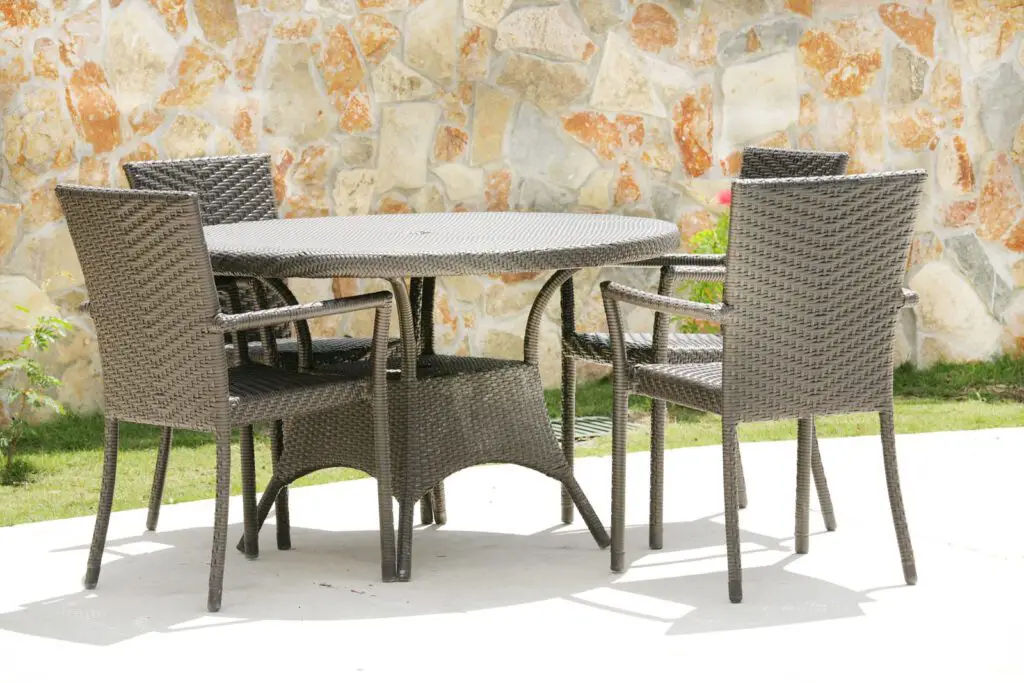
For instance, you might place a large terracotta pot filled with colorful flowers in the center of your garden bed. Or put a sturdy bench beneath a small tree, creating an inviting seating area. Paths or stepping stones can also anchor a garden, guiding visitors through your space clearly.
Anchoring doesn’t need many items. Just a couple of carefully placed pieces will give your garden structure, helping the rest of the plants and decorations feel purposeful and balanced.
Think in Layers
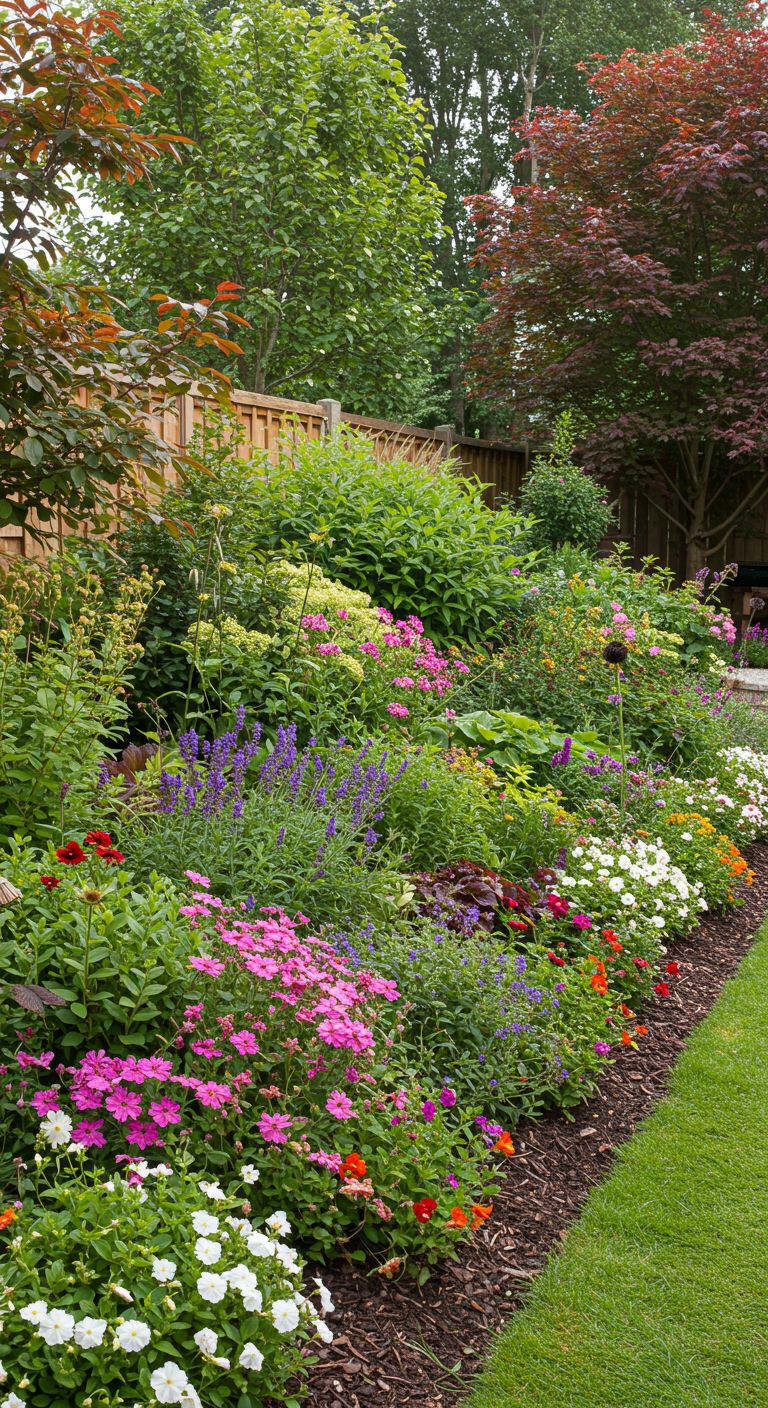
If you want your garden to feel lush and inviting, think in layers. Gardens naturally grow at different heights. Planting in layers mimics nature and makes your garden visually interesting. Start with ground covers, like creeping thyme or small flowering plants, to create a carpet of color close to the soil.
Next, plant mid-sized plants—like daylilies, hostas, or lavender. These fill the space between ground cover and taller plants, giving depth to your garden. Finally, add taller plants or shrubs, such as hydrangeas, tall grasses, or small trees, to create height.
Layering plants this way gives your garden depth and fullness without feeling cluttered. It’s easy to manage because each layer has its own clear space, and it helps your garden look good throughout the seasons.
Final Thoughts: Grow Your Garden with Confidence
A beautiful garden doesn’t happen overnight. And you don’t need expert skills to start. Just take one small step at a time, choosing ideas that fit your space, your lifestyle, and what you enjoy most. Gardening is about experimenting, learning, and having fun along the way. Each of these simple ideas—color blocking, sensory planting, or even adding hidden edible plants—can help you build confidence as you go.
Remember, gardens naturally evolve. Plants grow and change, seasons shift, and your tastes might change too. Let your garden reflect that growth. Start small, be patient with yourself, and keep trying new ideas. Soon you’ll look around and realize your simple, beginner-friendly garden has become exactly the outdoor space you always wanted.
